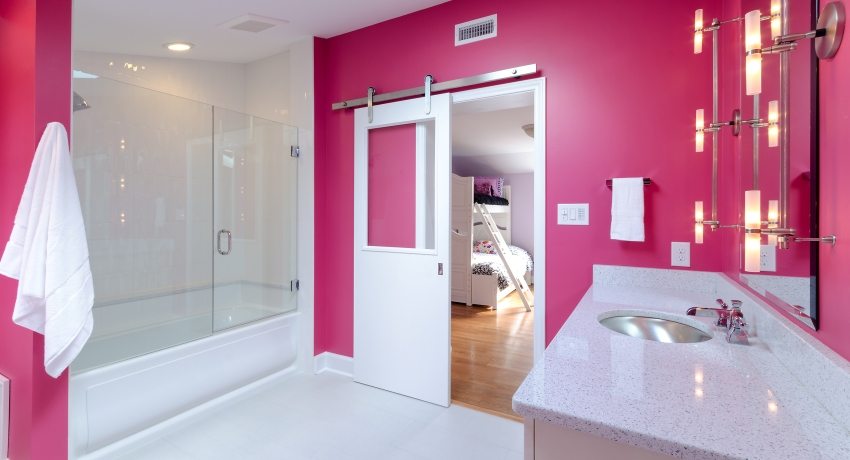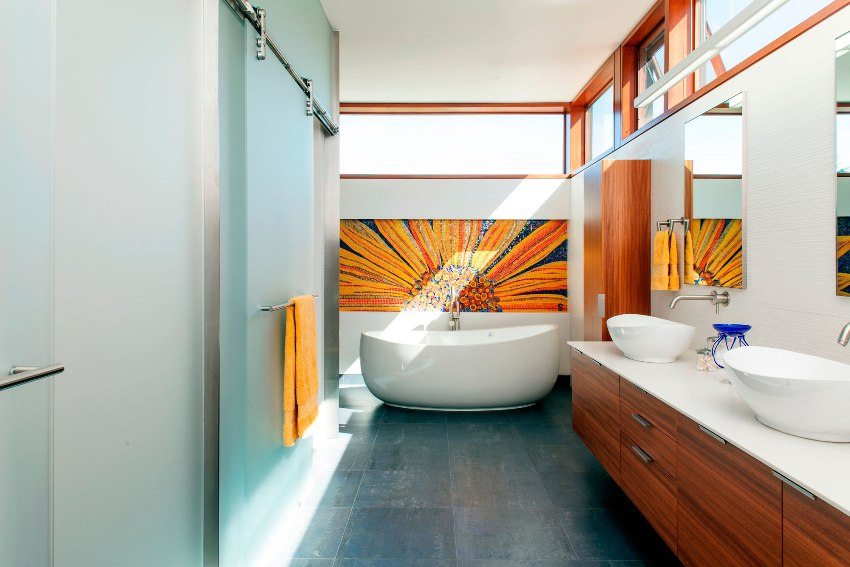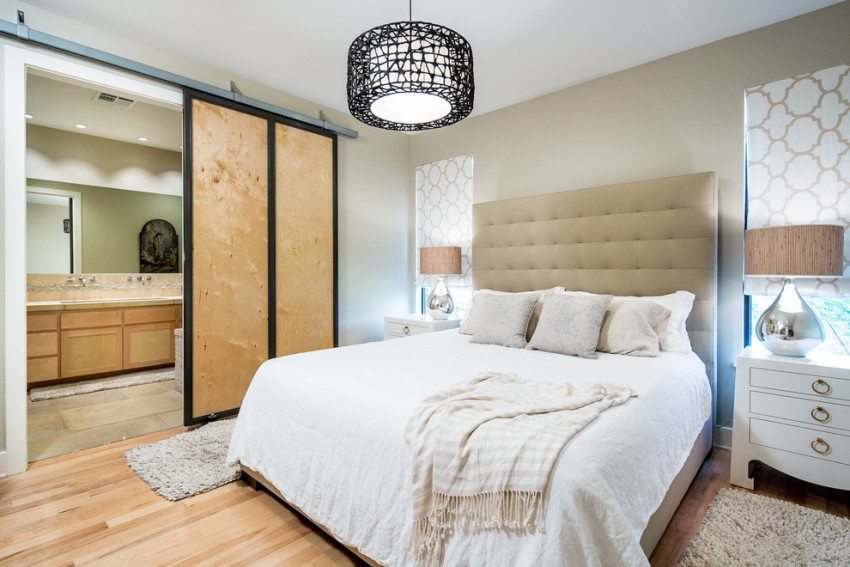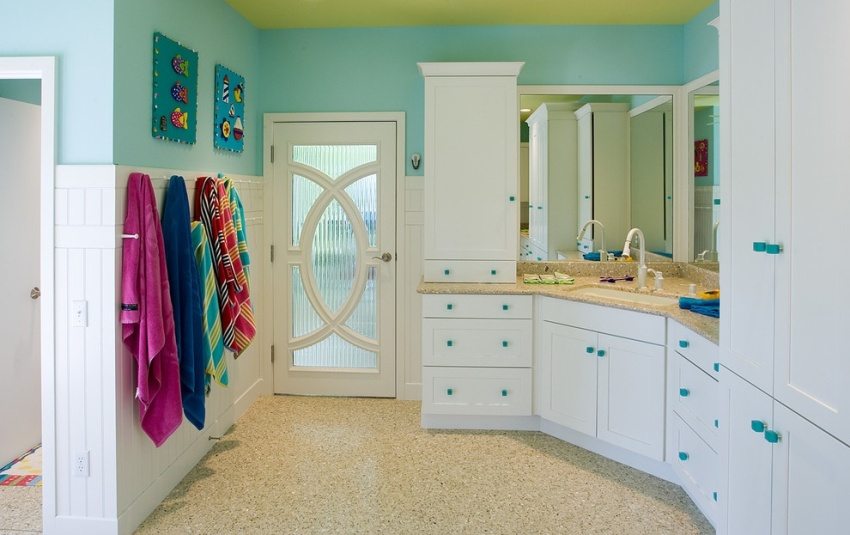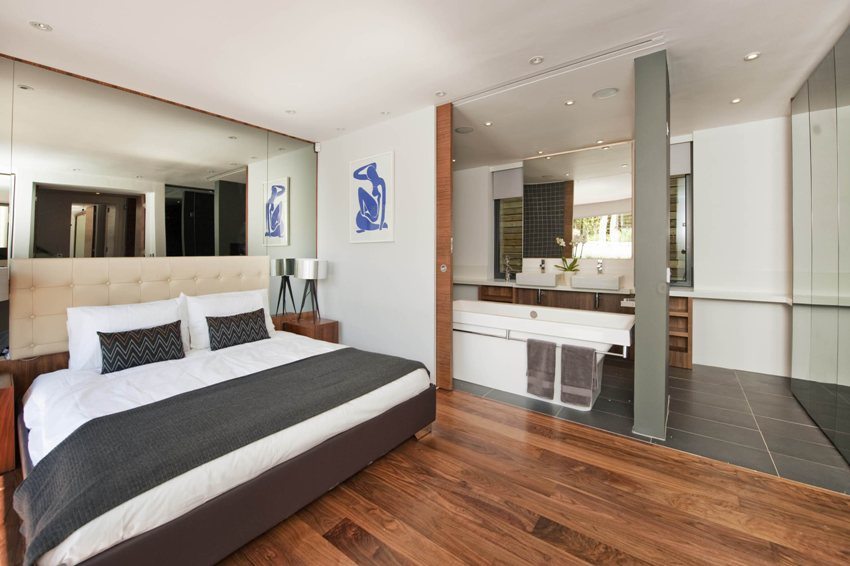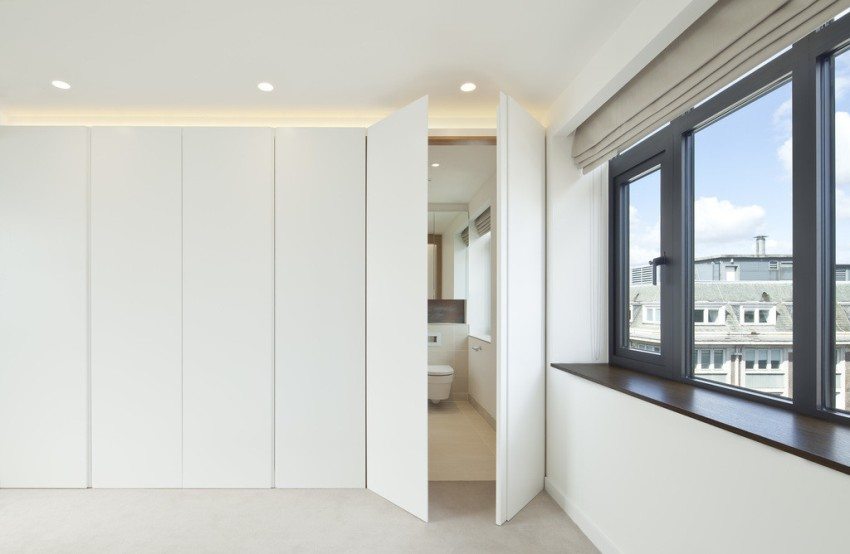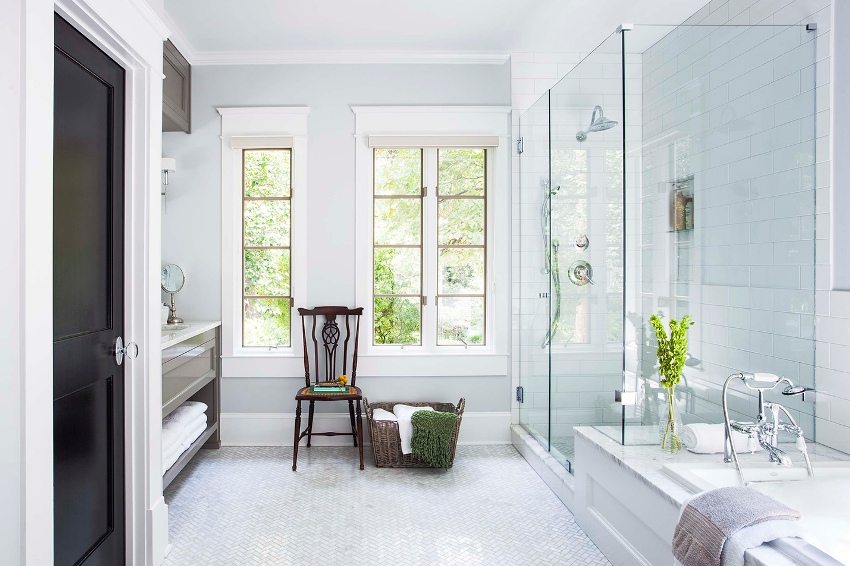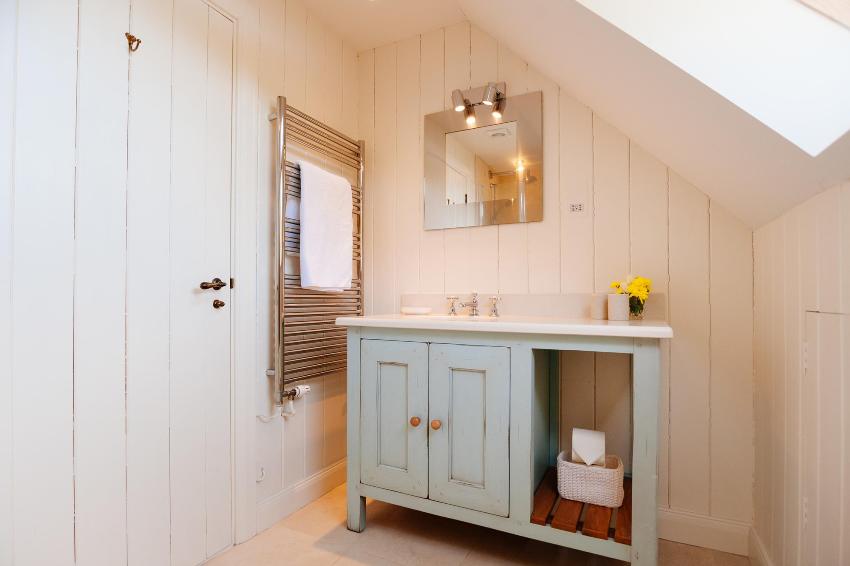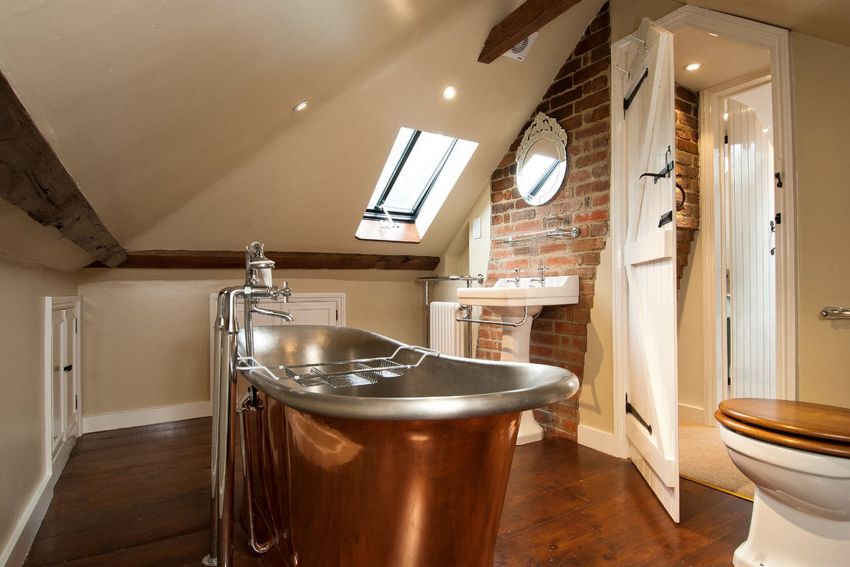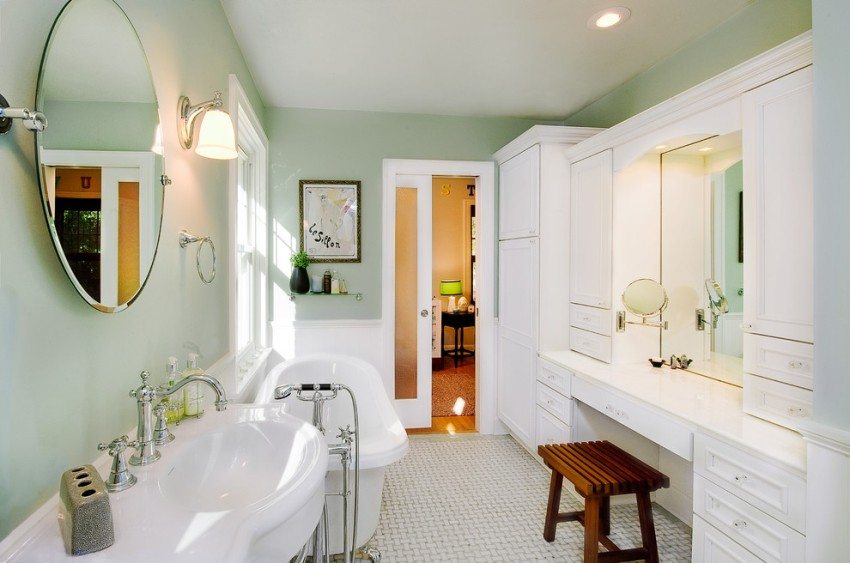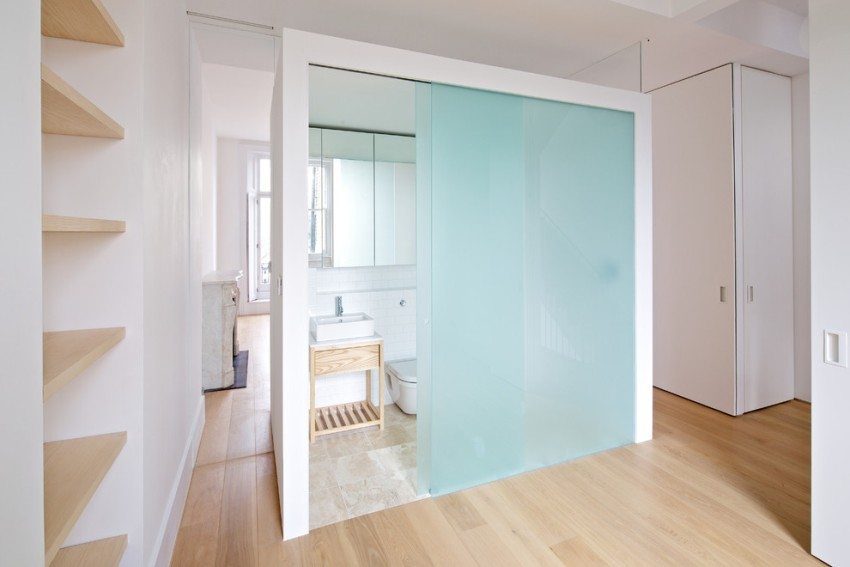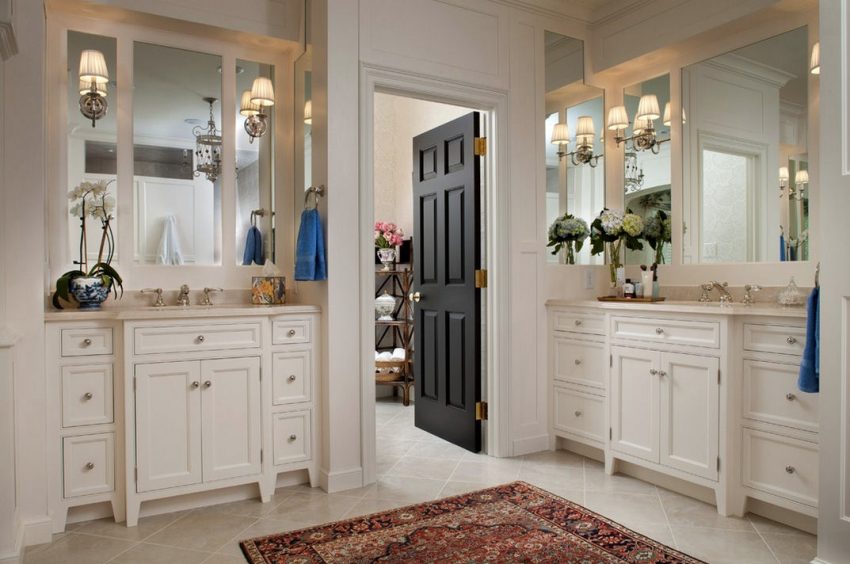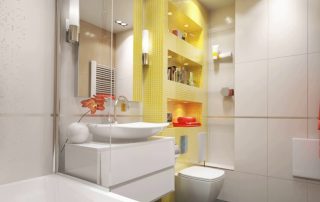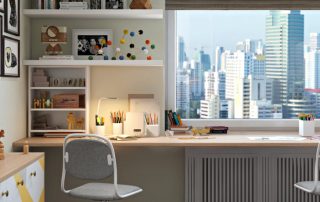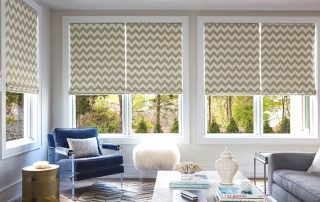Until recently, interior doors were used for bathrooms and toilets. However, modern interior design rules differ from the old ones. According to the new standards, the doors for these premises must differ in both design and special qualities. Let's try to figure out how to choose the optimal model and correctly install the door to the bathroom and toilet.
Content [Hide]
The door to the bathroom and toilet: selection criteria
Which doors to put in the bathroom and toilet is not as simple a question as it might seem at first glance. The traditional choice of users is to use wood or wood-based materials for bathroom and toilet doors. Photos of the interiors of bathrooms decorated with wood are perhaps the most common on repair, construction and design portals on the network.
When choosing, you need to take into account the requirements for bathroom doors:
- resistance to almost constant exposure to moisture and temperature changes while taking a bath or using a shower;
- the ability to retain heat in the bathroom and provide good sound insulation;
- convenience and ease of use and cleanliness.
Bathroom and toilet doors: choice of material
The Russian market offers a wide range of interior doors suitable for installation in bathrooms. They differ in design, type of opening, material of manufacture and, accordingly, cost.
Fiberboard doors
Fiberboard - fibreboards, which are also called hardboard. Like MDF boards, Fiberboard obtained from compressed dusty sawdust, but not dry, but steamed. Therefore, the thickness of hardboard does not exceed 7 mm, and frame doors are made from it. A frame is assembled from a wooden block, corresponding in size to the doors to the bathroom and restroom, and glue it between two fiberboards.
Such a door can be finished in various ways: primed and painted, laminated, finished with veneer or polyvinyl chloride film, pasted over with paper or cloth and varnished over them.
This is one of the lowest-cost options for installing doors to the bathroom and toilet, but mechanical damage to the coating at the ends will lead to moisture and steam on the frame, and ultimately to weaken the structure.
Chipboard doors
Chipboards (Chipboard) Is a material made from wood chips or sawdust by dry pressing at high temperature and pressure. Formaldehyde resins work as a binder in it.
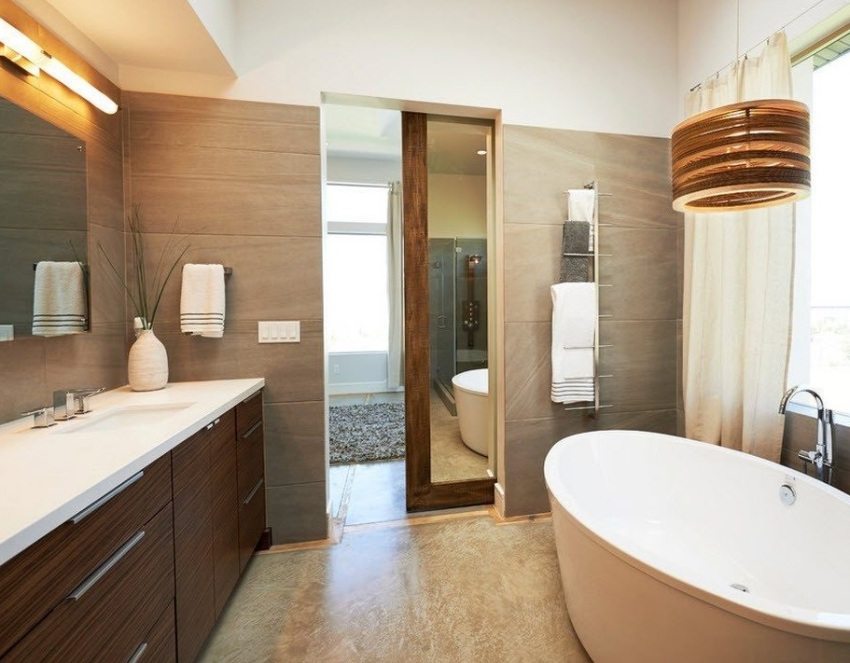
Door out laminated chipboard with a mirror insert in the bathroom
It is one of the most widely used in the production of furniture, decoration boards, door panels, etc. materials. It is distinguished by ease of processing, strength, resistance to water and steam (while for rooms with high humidity there are varieties with enhanced water resistance) and the ability to hold various types of fasteners well (nails, screws, etc.).
In addition, doors to the bathroom and toilet made of laminated chipboard are a cheap and affordable way to ennoble the space of a typical apartment: after all, with the help of a laminated door leaf, you can imitate the structure of natural wood or other natural materials and embody a variety of color solutions.
Advice! It is necessary to distinguish between laminated and laminated boards. At almost the same cost, the laminated canvas is inferior to the laminated one in durability.
However, products from Chipboard there are also disadvantages. Firstly, the formaldehyde resins that are part of them release substances that are not the most beneficial to health into the air. And although there are types of chipboard and fiberboard, in which the emission (evaporation) of formaldehyde is quite low, you should refrain from this material in living quarters (especially if there are children among the residents).
Advice! When choosing doors made of chipboard, you should pay attention to the marking of the material. Particleboard type E1 has a formaldehyde emission rate significantly lower than that of E2. The letter B in the marking means the increased water resistance of the plate. The upper limit of swelling in thickness for such a plate is 15% (in 24 hours).
Secondly, these slabs are too hard, which severely limits their decorative effect. They practically do not lend themselves to fine processing: deep milling and carving.
Third, there is currently no production of fire-resistant Chipboard, which include flame retardants. Foreign-made fire-resistant plates will cost the consumer much more.
MDF doors
MDF - reduction of the translation into Russian of the English term Medium Density Fibreboard, that is, fine-dispersion fraction. MDF boards made of very small, almost dusty, sawdust, bonded with lignin and paraffin, therefore MDF is an environmentally friendly, soft and at the same time durable material.
Fact! Lignin and paraffin have one of the lowest formaldehyde emissions.
It is the softness that has made it one of the favorite materials of modern interior designers. It lends itself to the finest processing and has all the advantages of solid wood, while being more durable, water resistant and cheaper. MDF also lacks such disadvantages of natural wood as anisotropy of properties and tendency to dry out.
Thanks to this, MDF is widely used for the production of furniture facades, countertops, interior decoration products: from wall panels and parquet boards to profile parts - and, finally, bathroom and toilet doors with boxes.
Fact! The strength of MDF boards is 1.82-2 times higher than the strength of chipboard.
At the same time, there are two points of view on the use of MDF in wet rooms. According to the first, this is one of the most suitable materials.If you focus on the second, the doors from it are unsuitable for bathrooms, because they are devoid of a laminated layer on the back side, which is why the door frame swells after a few days of operation.
In addition, MDF has one more drawback - until now, most of the products from this material are supplied to the Russian market by import manufacturers, therefore their price for the end consumer is quite high.
Wooden doors
Wood is a traditional material for interior elements such as doors. The main property of wood is to absorb moisture from an atmosphere saturated with water vapor and release it into a dry atmosphere, facilitating air exchange. But as a result of these processes, the door frame can lead.
This can be resisted by using anchors and polyurethane foam to fix it in the opening, as well as by covering the wood with wear-resistant varnish, paint, wax or soaked in oil. However, paint, oil or wax reduces or even nullifies the wood's ability to breathe.
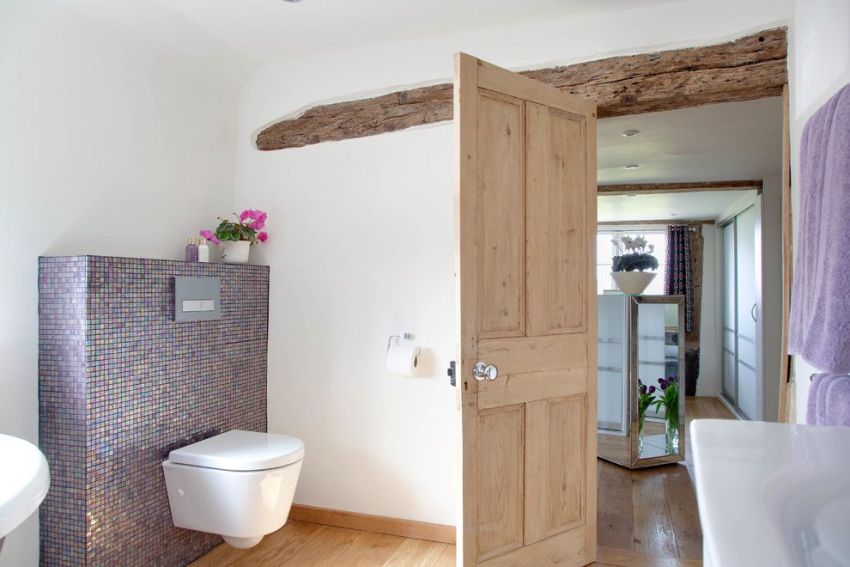
To protect a wooden door from excess moisture, it is varnished, painted or impregnated with a special oil
Advice! For the doors of a room with high humidity, a hard tree is best suited: oak or beech.
Accordingly, if there is an intention to put wooden doors in the toilet and bathroom, you will have to pay special attention to ventilation. One of the ways to improve it is to make ventilation vents in the lower part of the door leaf.
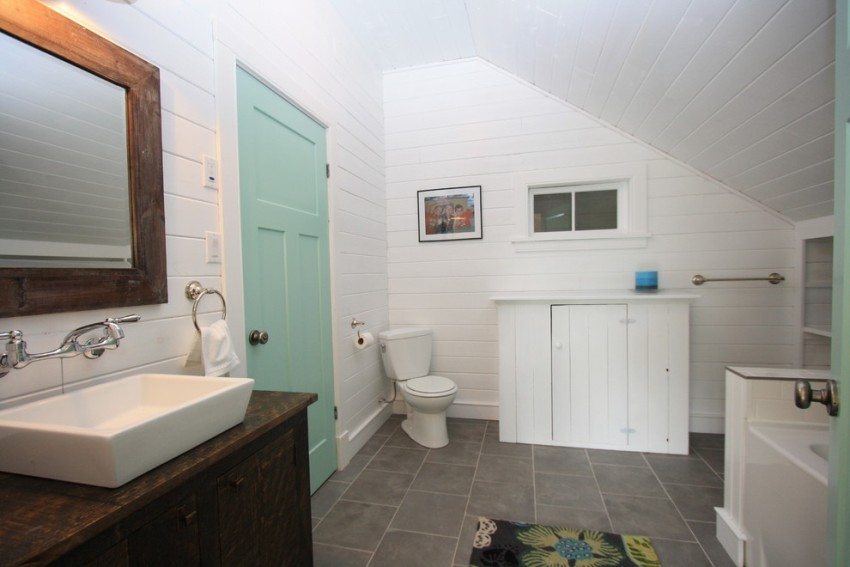
When installing a wooden door in the bathroom, you need to take care of proper ventilation of the room
Advice! In order for the attractive appearance of a wooden door to remain as long as possible, it is necessary to maintain the protective coating, taking good care of it. Alas, in most cases it will not come cheap.
Before varnishing or painting, an antiseptic should also be applied to protect against mold and mildew.
Metal-plastic and plastic doors
Based on the above, we can come to the conclusion that it is preferable to use doors made of other materials, including interior doors to the toilet and bathroom made of wood or its derivatives, instead of interior doors. artificial.
Reinforced-plastic or plastic doors to the bathroom have a number of advantages:
- durability - aluminum and plastic are resistant to temperature changes, water and its vapors, are not subject to decay;
- moisture resistance - the shape and volume of doors made of these materials does not change when exposed to moisture;
- ease of maintenance - plastic does not require special care products and efforts during operation. It is enough to periodically wipe the doors with a sponge or napkin with a cleaning solution, sometimes supplementing it with an antiseptic;
- variety - with the help of modern finishing films, pvc doors can be given any shade and structure.
Glass doors
Glass doors are almost the ideal solution to the question of which door to install in the bathroom and toilet, but they have a number of disadvantages:
- fragility. For the safe operation of doors, even from thick glass, it is necessary to cover their surface with an impact-resistant film. This will also help solve the problem of transparency - when using tinting film;
- the formation of condensation. The formation of condensation on a glass surface, the temperature of which is lower than the temperature of the humid air in the bathroom, is inevitable. Condensation flows down to the floor and forms puddles, and when it dries, it leaves streaks and stains on the glass;
- the complexity of leaving. Difficulties in caring for glass doors it creates condensation in the bathroom and toilet. You have to choose - either wipe the glass dry every day or endure the unattractive appearance of one of the main elements of the bathroom interior.
However, designer photos of glass doors for bathroom and toilet look very advantageous.
Doors to the toilet and bath: photo, choice of design
Often, the choice of the design and installation method of the door depends on its material, but there are also universal solutions. Let's consider them below.
Traditional doors (swing doors)
In apartments of the old layout, the bathroom is often located so that its door, being open, blocks the passage to the corridor or to the kitchen. However, in many cases it makes no sense to abandon the installation of swing doors, since the decision to use a different design may lead to the need to increase the width of the opening and even to redevelopment of the home.
Sliding doors (compartment doors)
Sliding doors to the bathroom and toilet can be made from all the materials mentioned. Given that the installation compartment doors leads to additional costs of material and time resources, this is one of the optimal construction and design solutions.
Folding doors
Most folding doors (such as "harmonic") are made of plastic. They are lightweight and comfortable, unpretentious in maintenance and significantly free up space.
Related article:
Folding interior door-book: original design and space saving. Design features, advantages and disadvantages. Design options. Installation of a book-door.
Roll-up doors
If the height of the openings and ceilings allows, then you can install a rather non-standard structure for a living space - a roll-up door. Plastic or metal-plastic will most often be used as a material.
Thus, there are several options for choosing and installing doors to the bathroom and toilet. Photos of interiors should help the consumer decide on the final decision.
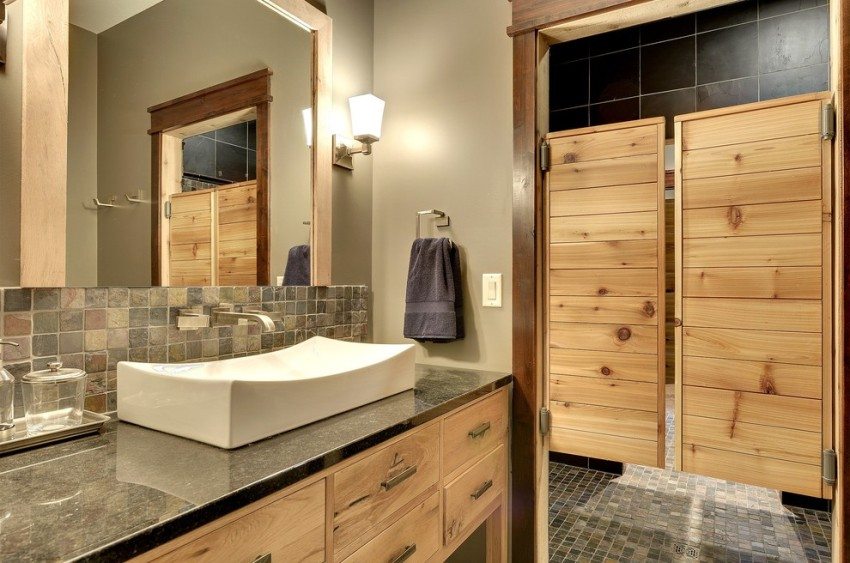
A creative solution for a bathroom - installation of roto-doors that can be opened in both directions
In addition to the material and method of installing doors, the conditions of their operation are important. Ventilation is needed to extend the service life of the door leaf and frame. The ventilation holes in the door leaf, as well as gaps of 1.5-2 cm above or below, will help to improve it, which should be taken into account when selecting doors by size.
